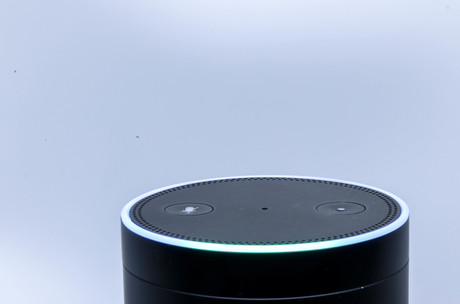How voice recognition will change industry
Thursday, 26 April, 2018

Since its release, Amazon has sold over 20 million Echo devices with Alexa — the voice-activated assistant. It has changed the way we complete many daily tasks — from shopping to getting weather updates. Could it do the same for manufacturing? Jonathan Wilkins, marketing director at obsolete parts supplier EU Automation, explains how voice recognition technology can improve manufacturing processes.
Computers are being developed at a rapid pace — from bulky processors in the 1990s, to touchscreen mobile phones that can hold impressive amounts of data. Speech recognition is estimated as the next interface that we will use daily and developers have been refining the technology for over 50 years.
Audrey, first developed in 1952 at Bell Laboratories, was able to recognise digits from one single voice. Once refined, the tech was introduced to smartphones, but was quickly neglected because of inaccuracy. Now, voice recognition is a part of everyday life as Android estimates that, last year, 20% of queries were spoken — that’s around 20 billion spoken queries a day.
As the technology becomes smarter, it will be able to go from answering daily queries to conversing with manufacturers about their processes. Machines in factories are already communicating with one another, sending real-time data about their condition. Speech recognition can streamline this process further, improving productivity and efficiency on the factory floor.
Productivity
The main benefit of using speech recognition technology in a factory is that employees will be able to use both of their hands. Employees in the factory need to keep track of everything they do and look for instructions using computers or devices. With speech recognition, they can put the device down and concentrate on the task at hand.
Removing devices in some areas of the factory, such as the warehouse, can greatly improve productivity. In warehouses, pickers can use both hands to sort through products and ask for instructions using speech recognition.
For most applications, speech recognition still requires a device. Wearable devices, such as smart glasses, are becoming more popular in manufacturing and remove the need for handheld devices. Now, workers can see the information in front of them while they complete the task, increasing the chances of them completing it accurately first time around.
Remote
Manufacturers often run multiple plants that are miles apart, some of which are in remote locations. Employees in these remote facilities may work alone and be there just for machine maintenance.
Normally, in an emergency or a breakdown, this employee calls another facility for instructions, which can take too long and increase plant downtime or inactivity.
Voice search technology can help employees in this situation, as they will be able to solve issues more quickly and efficiently. The technology will search through all the possible outcomes and instruct the employee in how best to fix the system.
Advancements in machine learning mean that manufacturers and machines will be able to learn from each other. Voice recognition will develop this further, as devices will begin to understand their users and give the correct advice or information more often than not.
In the future, developers want to ensure voice recognition technology can answer more queries correctly. They may be able to answer questions in specific contexts, such as know if the person is correctly completing a task and even answer half-spoken queries.
As more people introduce Alexa, Siri and others into their homes, speech recognition technology will develop to help with more tasks. Now that the technology is refined, industries such as manufacturing can embrace speech recognition to streamline its processes and better understand its machines.
Fingertip bandage brings texture to touchscreens
Researchers have developed a haptic device that enables wearers to feel virtual textures and...
Sweat sensor sticker monitors vitamin C in real time
Researchers have developed a battery-free electronic sticker designed to monitor vitamin C levels...
Flexible optical sensor detects pressure and location
Researchers have developed a multi-channel optical sensor that is capable of detecting both the...




